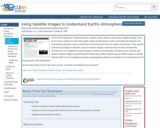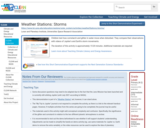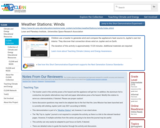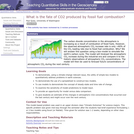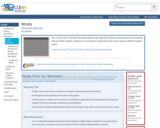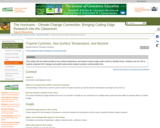
Part 1
The SAGUARO Exploring GIS Investigations for Earth Science curriculum requries the use of ESRI's ArcView GIS software version 3.0 for Macintosh or 3.2 and higher for PC.
Use ArcGIS and data files from the SAGUARO Project's (http://pro.arcgis.com/en/pro-app/help/projects/supported-data-types-and-items.htm) Exploring Tropical Cyclones investigations. After the students are introduced to the program they are asked to determine what criteria are required for the formation of tropical cyclones.
Exploring Tropical Cyclones Unit 1 has a great deal of data for the students to use. The data is presented as layers on a world map. Different features can be turned on and off at will, and layers can be brought in from other units if desired.
Features they can work with are:
August SST
February SST
tropical cyclone tracks
locations of tropical cyclone formation for Jun-Sep
locations of tropical cyclone formation for Dec-Mar
Part 2
Students are divided into small groups (3-4 students works well) where they compare their findings (including what evidence they used) with the findings of the other group members. Each group is then asked to determine the threshold temperature for tropical cyclone formation as well as to calculate the area of the ocean that has SST equal to or above this threshold temperature (you can have them calculate this for each season, or as a total area including both February and August data).
Part 3
Class discussion of what they have found so far. Introduce them to model predictions of SST for different atmospheric CO2 levels. Propose a 2 degree C increase in tropical SST and ask what they think that will mean. What other factors might influence the formation of tropical cyclones?
Part 4
Assign an article or two (ideally a published peer reviewed article - to introduce them to this type of scientific writing - that is if you can find one that you consider appropriate for your students) that introduces them to other factors required for tropical cyclone formation and predictions of how climate change might affect them. For example an article that discusses the role of wind speed near the surface of the ocean, or vertical wind shear, or one that shows that the threshold temperature is actually predicted to increase by the same magnitude as the SST increase.
Have them write a report that summaries the criteria for cyclogenesis as well as explaining how they would go about predicting where tropical cyclones will form as a result of an increased SST. They do not need to perform all of the tests they propose! They should state what sort of information they would like to obtain and why.
(Note: this resource was added to OER Commons as part of a batch upload of over 2,200 records. If you notice an issue with the quality of the metadata, please let us know by using the 'report' button and we will flag it for consideration.)
- Subject:
- Applied Science
- Biology
- Environmental Science
- Life Science
- Mathematics
- Measurement and Data
- Oceanography
- Physical Science
- Material Type:
- Activity/Lab
- Provider:
- Science Education Resource Center (SERC) at Carleton College
- Provider Set:
- Teach the Earth
- Author:
- Danielle Schmitt
- Date Added:
- 08/31/2019
